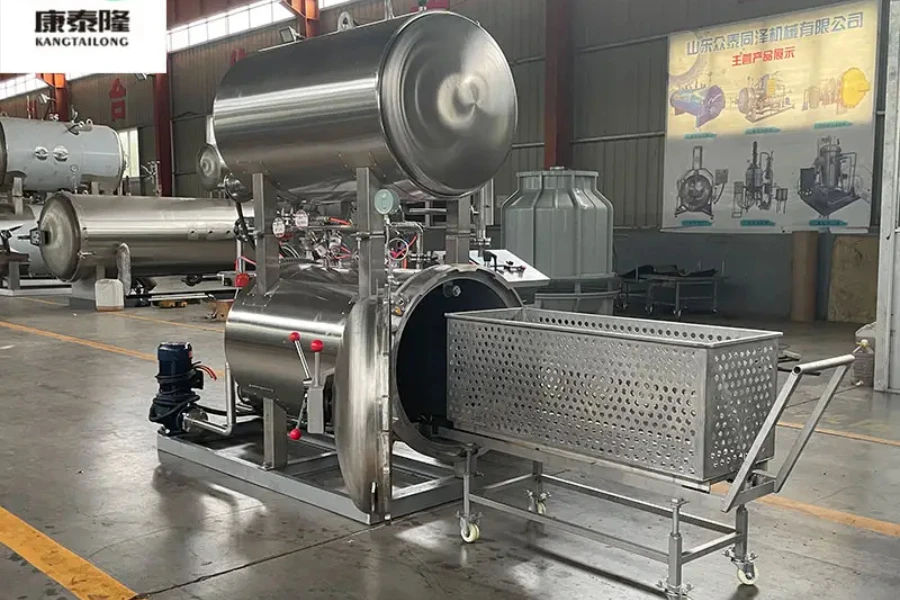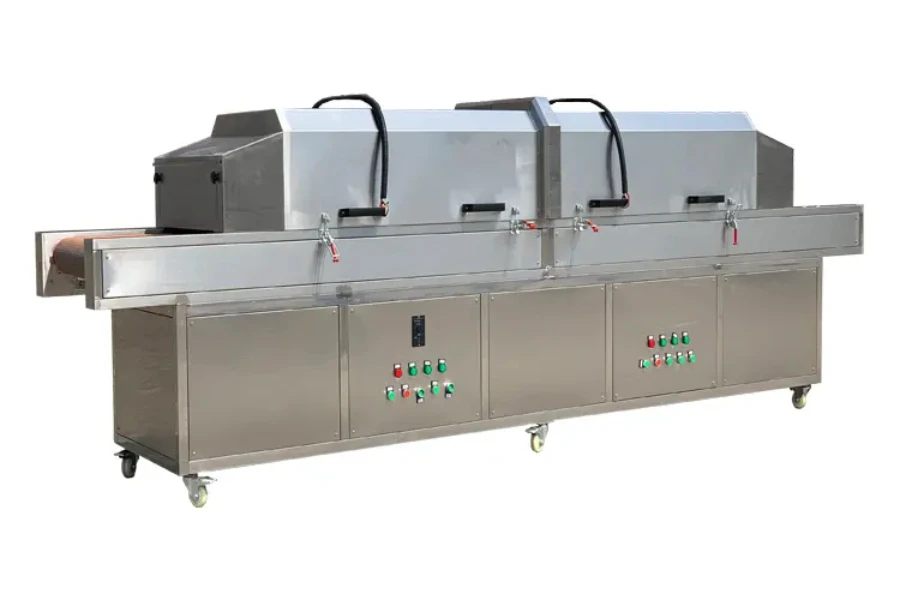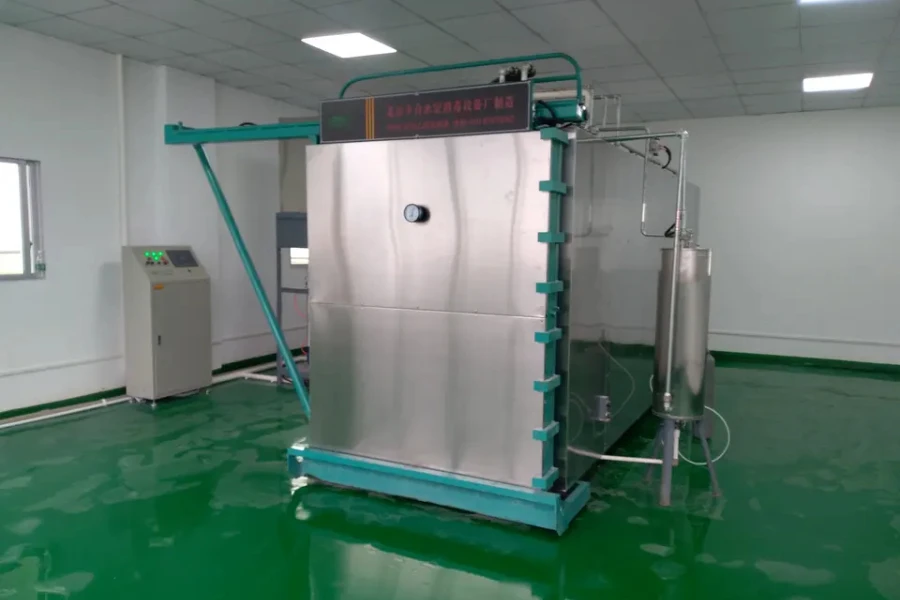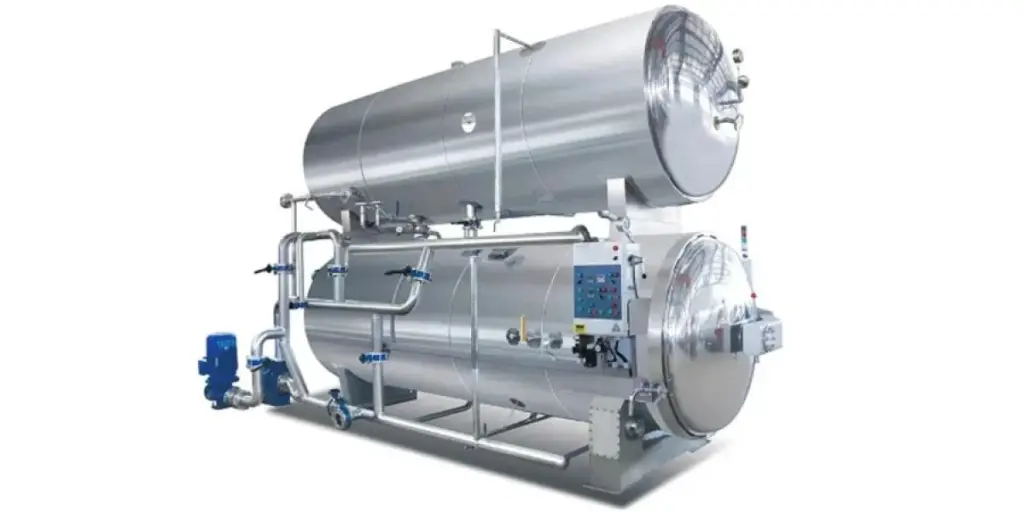Food sterilization machines have been used for many years to remove biological contaminants and other microorganisms that may be found in food. The demand for these machines has been increasing steadily, which has led to many manufacturers joining the market. This has resulted in the availability of a variety of food sterilization machines, which can make it tricky to know which product to source.
This article will highlight the market share of food sterilization machines, as well as discussing the different types of sterilization, and how to select an ideal food sterilization machine.
Table of Contents
Overview of the food sterilization machine market
Types of sterilization
How to select food sterilization machines
Conclusion
Overview of the food sterilization machine market
There has been a growing focus on food safety and sustainability in food ingredient production. This has resulted in increased demand for food sterilization equipment. Generally, the market is segmented based on the process, application, technology, and region. Moreover, food processing manufacturers are opting for sterilizing machines to increase the shelf life of food while observing regulatory standards.
In 2021, a forecast by Verified Market Research indicated a value of about USD 791.11 million for the food sterilization equipment market. It is projected to expand by a compound annual growth rate (CAGR) of 6.36% to reach USD 1,378.52 million by 2030. Augmenting the growth of the food sterilization industry are the constant technological developments in the creation of non-thermal food preservation.
Based on the process, the batch sterilization segment accounted for a significant market share. This is because it offers an improved container for process flexibility and canned foods. Under the technology segment, steam registered a considerable market share during the forecast period. In this case, it produces high-quality products at low costs. Regionally, North American holds the largest market share due to increased awareness of the benefits of pasteurization and lyophilization.
Types of sterilization
1. Steam sterilization

Steam sterilization equipment is used in the food industry to eliminate harmful organisms and prevent spoilage. Food products are heated to a high temperature for a certain period using steam as the heating medium. The design of steam sterilization equipment varies based on the food products being sterilized and the intended outcome. For instance, high-acid foods like fruits will require a simple pressure cooker.
The equipment has the following components:
- Sterilizer vessel – where food is placed for sterilization.
- Steam generator – generates steam to heat the food products.
- Temperature control system – monitors and controls the temperature of the steam and food products during the sterilization process.
- Pressure control system – regulates the pressure inside the sterilizer vessel during the sterilization process.
- Timer – controls the duration of the sterilization process.
- Cooling system – a water bath or an air cooler cools food products after sterilization.
2. Dry heat sterilization

Dry heat food sterilization equipment kills harmful microorganisms on food to prevent it from spoiling. It heats the food products to high temperatures in a hot air sterilizer or an oven. The oven or hot air sterilizer component is a batch-style or continuous-style unit where the food is placed for sterilization.
The heating system, which can be gas-fired, electric or steam-heated, generates hot air to heat the food products. Just like the steam sterilization equipment, dry heat sterilization machines have a temperature control, a timer, and cooling systems that work in conjunction to keep the food safe. Additionally, low-moisture foods like dried fruits require simple ovens compared to more complex foods like baked foods.
3. Ethylene oxide (ETO) sterilization

Ethylene oxide sterilization equipment exposes food products to ethylene oxide gas to eliminate harmful microorganisms and prevent spoilage. They sterilize heat-sensitive food products, like medical devices and packaged foods. Packaged foods require a batch-style sterilization chamber, while medical items require a continuous one.
The equipment has the following components:
- Sterilization chamber – the main component where food products are placed for sterilization.
- Ethylene oxide generator – generates ethylene oxide gas used to sterilize the food.
- Temperature control system – monitors and controls temperature in the sterilization chamber.
- Humidity control system – controls relative humidity levels in the sterilization chamber.
- Pressure control system – regulates pressure in the sterilization chamber to concentrate the ethylene oxide gas properly during the sterilization time.
- Ventilation system – removes the ethylene oxide gas from the chamber after sterilization.
- Safety system – has alarms, sensors, and shut-off valves to ensure the safe operation of the equipment.
How to select food sterilization machines
1. Cost
The cost of food sterilization equipment depends on factors like the type of food being sterilized, the production volume, and the desired outcome. This boils down to the size of the sterilization chamber, the complexity of the sterilization technique, and the need for accessories like temperature control systems. For instance, steam sterilization equipment is the most cost-effective for high-volume production. Food sterilization equipment average costs range from around USD 8,000 to USD 25,000.
2. Working pressure
Based on working pressure, the choice of food sterilization equipment is determined by the type of food being sterilized and the specific sterilization requirements. Steam sterilization equipment operates at high working pressures of about 15 to 30 psi. This ensures the food is sterilized sufficiently, including the hard-to-reach areas. Dry heat sterilization equipment operates at low working pressures equalling atmospheric pressure. This is less efficient because it requires longer sterilization periods. Ethylene oxide gas sterilization operates at low working pressures of around 1 to 5 psi. This allows the ethylene oxide gas to penetrate the food effectively.
3. Capacity
The capacity of food sterilization equipment depends on the production volume and the type of food being sterilized. Generally, the capacity ranges from small, batch-style units to large continuous-style units. Buyers should understand that for high-volume production, a continuous-style unit is more suitable for sterilizing large quantities of food in a single pass. In contrast, a batch-style unit is more cost-effective for smaller production volumes. Furthermore, carefully assessing food sterilization needs and capacity will help buyers acquire the appropriate equipment.
4. Efficiency
Buyers should consider the efficiency of food sterilization equipment when making a purchase. Steam sterilization equipment is the most efficient and suitable for high-volume production. The high-pressure steam effectively sterilizes the food in a relatively short time. Dry heat sterilization is suitable for moisture-sensitive food but is less efficient because it requires longer sterilization times. Additionally, ethylene oxide sterilization equipment is highly efficient as it requires a short time for the process. However, ethylene gas should be handled with care.
5. Usability
Considering usability, autoclaves are the most reliable equipment for sterilizing food. They use high temperatures and pressure to effectively sterilize food products. The UV-C light sterilizers are compact and require minimal maintenance to kill viruses, bacteria, and other pathogens. Buyers who opt for chemical sterilizers will risk the chances of chemical residues on food after sterilization. As such, food sterilization requirements and food processing constraints determine the usability of food sterilization equipment.
6. Applicable food
The desired level of sterilization and budget determine the type of food to be processed. Chemical sterilizers are suitable for fruits, vegetables, and meat products. Microwave sterilizers can process frozen foods, vegetables, fruits, and ready-to-eat-meals. Steam sterilizers are suited for canned foods, meat, and dairy products. In addition, UV-C light sterilizers are suitable for a broad range of food products like sauces, fruit juices, and surface-sterilized fruits and vegetables.
Conclusion
Added to the abovementioned factors, buyers should comply with and maintain food safety measures. By considering these factors, buyers will be able to select suitable food sterilization equipment. This will go hand in hand with the food processing operation while ensuring high-quality food products. To learn more, and to acquire high-performance food sterilization equipment, visit Alibaba.com.




